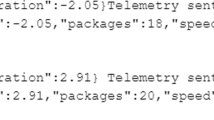Abstract
New production and work practices set new proficiency requirements for employees in operative organisations. Most of these requirements involve information and communication. We can train and educate people to meet with these challenges and design their physical and information environments to support and facilitate them in their work. New information tools play a central role in this development. But what kind of tools? How to apply these tools to enhance employees’ learning by reflection. In this article we will discuss the emergency of shop-floor information environment from the sociotechnical point of view. In addition, the possibilities and limitations of electronic performance support as a solution are evaluated. Shop-floor information artifacts are tools used to produce, organise, store and distribute work related information in a shop-floor environment. They may be very simple like handwritten notes or user interfaces to extremely complex data management systems.
Similar content being viewed by others
References
Anderson, J. R. (1990).Cognitive psychology and its implications, 3rd ed. W.H. Freeman and Co. New York.
Gery, G. (1991).Electronic performance support systems: How and why to remake the workplace through the strategic application of technology. Weingarten Publications, Boston, MA.
Hacker, W. (1973).Allgemeine Arbeits- und Ingenieurpsychologie. VEB Deutscher Verlag der Wissenschaften, Berlin.
Kasvi, J. J. J. (1991).Computer Assisted Job Training. TKK, TKK Offset: Espoo. (In Finnish).
Kasvi, J. J. J. (1993).Computer Assisted Job Training System. Master’s thesis, Helsinki University of Technology. (In Finnish).
Kasvi, J. J. J., Pulkkis, A., Vartiainen, M., and Nieminen, M. (1993).Developing a hypermedia authoring system for task training and information arrangement on the shop floor. In: Orpana, V. & Lukka, A. (Eds.) Production Research 1993, Proceedings of the 12th International Conference on Production Research, Lappeenranta, Finland, August 16–20, 1993, 647–648. Elsevier. Amsterdam, London, New York, Tokyo.
Kasvi, J. J. J., Pulkkis, A., Vartiainen, M., and Nieminen, M. (1994).Building an Information Support System to Support Shop-floor Employees. In: Levonen, J.J. and Tukiainen, M.T. (Eds.) Proceedings of the Interdiciplinary Workshop on: Complex Learning in Computer Environments: Technology in School, University, Work and Life-Long Education (CLCE94), 186–190. Toty: Joensuu.
Meijer, T. and Roe, R. A. (1993).The analysis and design of mental information work: a method based on the action facilitation approach. A paper presented at the sixth European Congress on Work and Organizational Psychology, April 14–17 1993, Alicante, Spain.
Meshkati, N. and Loewenthal, A. (1988).An eclectic and critical review of four primary mental workload assessment methods: A guide for developing a comprehensive model. In: Hancock, P. A., and Meshkati N. (Eds.) Human mental workload. 251–268. Amsterdam-New York-Oxford-Tokyo: North-Holland.
Nielsen, J. (1993).Usability Engineering, Academic Press, Boston, MA.
Nieminen, M., Kasvi, J. J. J., Pulkkis, A., and Vartiainen, M. (1995).Interactive Task Support on the Shop Floor: Observations on the Usability of the Interactive Task Support System and Differences in Orientation and Hands-on Training Use. In: Kirby, M. A. R., Dix, A. J. and Finlay, J. E. (Eds.) People and Computers X, Proceedings of the HCI ’95 Conference. 79–93. Cambridge University Press, Cambridge-New York-Melbourne.
Nilsson, J. (1995).Designing artefacts for learning. Position paper for the CIC’95 workshop “Computer support, hypermedia and workplace learning”, August 14–18, 1995, Aarhus, Denmark.
Norman, D. A. (1990).The design of everyday things. (Originally published in 1988, as The psychology of everyday things. Basic Books, New York). Doubleday, New York.
Norman, D. A. (1993).Things that make us smart. — Defending human attributes in the age of the machine. Addison-Wesley, New York.
Ollikainen, V. (1989).Computer Assisted Training System — design and realisation of a prototype. Master’s thesis, Helsinki University of Technology. (In Finnish).
Ollikainen, V. and Pulkkis, A. (1989).Computer Assisted Training System, Support for the TV monitor Assembly Line Workers — A Case in Nokia Company. An unpublished case study report. (In Finnish).
Ollikainen, V., Pulkkis, A., and Vartiainen, M. (1991).Computer-assisted training system for the shop floor. In: Nurminen, M. I., Järvinen, P., and Weir, G. (Eds.) Proceedings of Human Jobs and Computer Interfaces Conference, 331–337. University of Tampere, Finland.
Raybould, B. (1990).Solving human performance problems with computers. Performance & Instruction, 29 (11), 4–14.
Senge, P. M. (1990).The fifth discipline: the art and practice of the learning organization. Doubleday/Currency, New York.
Vartiainen, M. (1987).The hierarchical development of mental regulation, and training methods. Helsinki University of Technology, Industrial Economics and Industrial Psychology, report 100. Otaniemi: TKK Offset.
Author information
Authors and Affiliations
Rights and permissions
About this article
Cite this article
Kasvi, J.J.J., Vartiainen, M., Pulkkis, A. et al. Information tools for the shop-floor. AI & Soc 10, 26–38 (1996). https://doi.org/10.1007/BF02716752
Issue Date:
DOI: https://doi.org/10.1007/BF02716752



